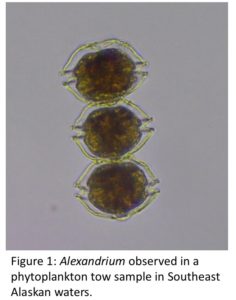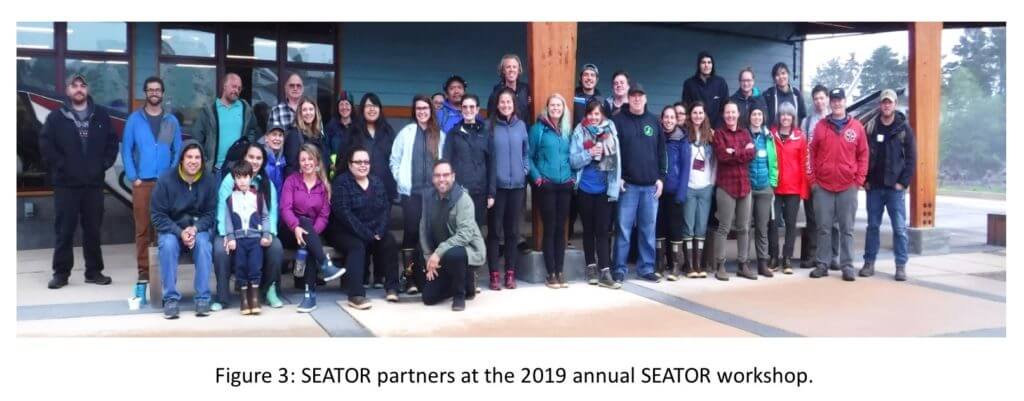Southeast Alaska Tribes Face Climate Change with Partnership
Southeast Alaska is a place like no other. Coastal brown bears stalk the shores, old growth forests grow tall and salmon serve as the lifeblood of the region. It is home to the Tlingit, Haida and Tsimshian people, who have served as the environmental stewards of these lands since time immemorial. Their stewardship continues to this day. This stewardship has been forced to adapt because of climate change. The timing, abundance and safety of subsistence foods has undergone significant change. This is especially true for the subsistence resource shellfish. Shellfish is found in abundance throughout Southeast Alaska. Typically, shellfish provide a healthy food source that is easily accessible to Southeast Alaskans. However, in a changing climate this once easily obtained food source, can be deadly.


Shellfish are filter feeders. They filter seawater that is brimming with their food of choice: plankton. Once the waters warm and the sun returns in spring and summer, plankton grow wild. Some of these plankton are known as Harmful Algal Bloom species (HABs). If these HABs become abundant, the shellfish that consume them, become toxic themselves, posing a risk to human and animal health.
The occurrence of HABs in Southeast Alaska is not new or different. The indigenous people of this area knew that during summer months shellfish were unsafe to eat. Many adages exist that describe the transition of shellfish consumption risk such as “Don’t harvest shellfish once the herring return” and “Only harvest shellfish in months with an R”. These adages based on millennia of land and ocean observing, in a changing climate, are no longer true. In fact, the State of Alaska suggests that people do not harvest wild shellfish and purchase it instead. For people who rely on subsistence, this is not a viable solution.


To ensure the access of subsistence shellfish in Southeast Alaska fifteen tribes in the region are working together to better understand the risk associated with shellfish harvest. This network is called Southeast Alaska Tribal Ocean Research (SEATOR). SEATOR partners are located as far north as Yakutat and as far south as Metlakatla, separated by nearly 18,000 miles of coastline. SEATOR partners submit their shellfish to the Sitka Tribe of Alaska Environmental Research Lab (STA-ERL) to be tested for toxins. STA-ERL and has been in operation since 2016 and has tested over 2000 subsistence shellfish samples for PSP toxins. Before the SEATOR dataset, no data set for PSP toxins existed is Southeast Alaska. Unfortunately, what it reveals can be scary.
Indigenous people from the region knew not to harvest shellfish in the summer months. The SEATOR dataset supports this idea fully. Starting in April shellfish in many communities exceed the regulatory limit for HAB toxins. However, due to changing climate conditions some species of shellfish are exceeding the regulatory limit during all months of the year. This means, that there is no longer a time of year when you can assume your shellfish will be safe to eat. The highest sample analyzed by STA-ERL so far was a blue mussel in 2019 with over 4,000 μg of toxin per 100 g of tissue. This is more than 50 times above the regulatory limit.
The climate is changing. Subsistence resource availability is unknown. However, the SEATOR network is making huge strides to understand, adapt and protect the people who call Southeast Alaska home. In the coming years SEATOR partner communities will continue to fight climate change with innovation and partnership.


SEATOR Partners:
Craig Tribal Association
Chilkoot Indian Association
Hoonah Indian Association
Hydaburg Cooperative Association
Central Council Tlingit and Haida Indian Tribes of Alaska
Organized Village of Kasaan
Organized village of Kake
Klawock Cooperative Association
Ketchikan Indian Association
Metlakatla Indian Community
Petersburg Indian Association
Sitka Tribe of Alaska
Skagway Traditional Council
Wrangell Cooperative Association
Yakutat Tlingit Tribe
Kari Lanphier is the Environmental Lab Manager, Sitka Tribe of Alaska. The National Indian Health Board and Climate for Health are partnering throughout November for National Native American Heritage Month to amplify Tribal leadership on climate solutions. You can learn more about NIHB’s Climate Ready Tribes Program here.